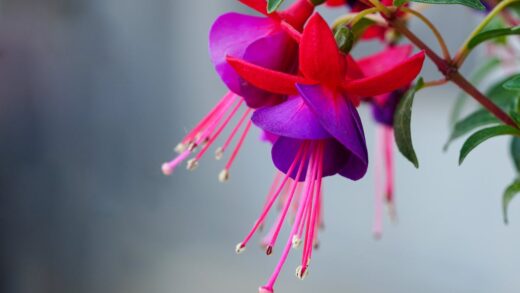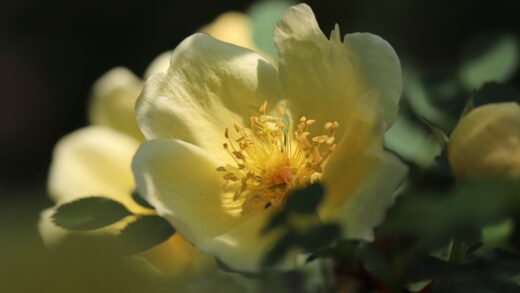The concept of pruning, in the traditional sense of shaping or reducing the size of a plant, does not apply to small bulbous perennials like glory-of-the-snow. For these plants, management of their foliage and spent flowers is the more appropriate focus, and the guiding principle is one of minimal intervention. The actions taken, or more importantly, not taken, after the blooming period have a profound impact on the health and future performance of the bulbs. The primary rule is to allow the foliage to persist for as long as it remains green, as it is during this post-bloom phase that the bulb is recharged for the next year. Understanding the role of the leaves and the implications of removing them prematurely is the most critical aspect of post-flowering care.
For glory-of-the-snow, the term “pruning” is best understood as the selective removal of plant parts for a specific purpose, primarily focused on either tidying the plant’s appearance or directing its energy. This involves two potential actions: deadheading the spent flowers and, much later, cleaning up the withered foliage. Neither of these actions is strictly necessary for the survival of the plant, but they can be beneficial for aesthetic reasons and for maximizing the vigor of the bulbs.
The most significant mistake a gardener can make is to cut back the green foliage immediately after the flowers fade. While the leaves may look untidy as they begin to flop over, they are performing the vital function of photosynthesis. This process creates the food reserves that are transported down to the bulb. Removing the leaves too early effectively starves the bulb, leading to a dramatic reduction in flowering the following year and the potential death of the plant over time.
Therefore, the approach to cutting back glory-of-the-snow is one of patience and understanding. It requires the gardener to tolerate a brief period of untidiness for the sake of the plant’s long-term health. By respecting the plant’s natural life cycle and allowing the foliage to complete its essential work, the gardener ensures a reliable and ever-improving display of these charming spring flowers year after year.
The concept of pruning for bulbous perennials
For most bulbous perennials, including glory-of-the-snow, “pruning” is not about controlling size or shape but about managing the plant’s energy and maintaining garden hygiene. The main plant body, the bulb, is underground and cannot be pruned. The parts that can be cut are the flower stalks and the leaves, and the decision to do so must be based on an understanding of their function. The primary goal is to ensure the bulb accumulates the maximum amount of energy for the following season.
More articles on this topic
The first pruning decision a gardener faces is whether to deadhead, which is the removal of the flowers after they have faded. This is a common practice for many flowering plants. The logic behind deadheading is to prevent the plant from investing its energy into producing seeds. By removing the spent blooms, the plant’s resources are redirected downwards, into strengthening the bulb and potentially producing more offsets, rather than being used for reproduction.
The second and more critical management practice concerns the foliage. Unlike with many other plants where removing old leaves is beneficial, the foliage of a spring bulb must be preserved at all costs while it is green. These leaves are the factory that produces the food for the bulb. Any “pruning” of green leaves is extremely detrimental. The only appropriate time to cut back the foliage is after it has completely yellowed and withered, indicating that the process of photosynthesis and energy transfer is complete.
Therefore, the pruning philosophy for glory-of-the-snow is fundamentally different from that for shrubs or woody perennials. It is a reactive and patient process. The gardener waits for the plant to signal that a part is no longer functional—a faded flower or a withered leaf—before removing it. This approach respects the plant’s natural rhythms and ensures its perennial life cycle can continue uninterrupted.
Managing foliage after flowering
The period immediately following the bloom of glory-of-the-snow is the most important time for the plant’s long-term health, and it requires careful management of the foliage. The strap-like green leaves that remain after the flowers have faded must be left completely undisturbed. Even though they may start to look a bit untidy as they lengthen and flop over, they are performing the most critical work of their entire life cycle.
More articles on this topic
During this post-bloom period, which typically lasts for about four to six weeks, the leaves are actively photosynthesizing. They are absorbing sunlight and carbon dioxide and converting them into the carbohydrate energy that is essential for the bulb’s survival and future growth. This energy is systematically transported from the leaves down into the bulb, where it is stored as starch. This stored food is what will fuel the emergence of the plant and its flowering in the next spring.
The gardener’s role during this phase is simply to protect the foliage. This means refraining from any activities that could damage or remove the leaves. If the bulbs are naturalized in a lawn, this is the period when mowing must be postponed. If they are in a border, care must be taken not to bury them under mulch or smother them with the emerging growth of larger, neighboring perennials. The leaves need continued access to sunlight and air circulation.
The visual cue to watch for is the natural senescence of the leaves. They will begin to lose their deep green color, turning yellow and eventually brown. This color change indicates that the process of nutrient transfer is complete, and the connection between the leaves and the bulb is shutting down. Once the foliage has completely yellowed and withered, it has fulfilled its purpose and can be safely removed without harming the bulb.
The critical role of leaves in bulb nourishment
To fully appreciate the importance of not cutting back the foliage of glory-of-the-snow prematurely, it is helpful to understand the biology of the bulb. A bulb is not a root; it is a modified, underground stem composed of fleshy scales that are essentially modified leaves. These scales are the plant’s storage organs. The energy produced by the green foliage through photosynthesis is converted into complex carbohydrates and stored in these scales, making the bulb plump and firm.
When the plant emerges in the spring, it draws heavily on these stored reserves. The energy required to push the shoots through the soil, develop the leaves, and produce flowers comes almost entirely from the food stored in the bulb from the previous year. The spring growth happens so quickly that the new leaves are not initially able to produce enough energy to support it. The bulb essentially gives the plant a “head start” using its saved-up energy.
The purpose of the foliage after flowering is to completely refill this energy bank and, ideally, add a surplus. This surplus allows the bulb to grow larger and to produce offsets, which are new daughter bulbs that will eventually mature and create a larger clump. If the leaves are cut off while they are still green, this refueling process is cut short. The bulb will be left in a depleted state, without enough energy to initiate flower buds for the following year.
If this premature cutting is repeated for a second year, the bulb will likely be so weakened that it cannot even produce foliage and will die. This is why allowing the foliage to mature and die back naturally is the single most important rule in the cultivation of all spring-flowering bulbs. The health of the foliage directly determines the health and performance of the bulb in the subsequent season.
Deadheading spent blooms: pros and cons
Deadheading, the act of removing faded flowers, is a common horticultural practice, and it can be applied to glory-of-the-snow. The primary advantage of deadheading is energy conservation. By snipping off the spent flower heads before they can form seed pods, you prevent the plant from expending a significant amount of energy on the process of seed production. This conserved energy is instead redirected back to the bulb, contributing to its growth and the formation of offsets. Over time, this can lead to larger, more vigorous clumps.
The process of deadheading is simple. Once the flowers have wilted and lost their color, they can be snipped off at the top of the flower stalk using a pair of small scissors or garden snips. It is important to remove only the flower head and to leave the flower stalk and all the leaves intact. The stalk, like the leaves, is capable of photosynthesis and will contribute some energy back to the bulb as long as it remains green.
However, deadheading glory-of-the-snow is not always necessary or desirable. One of the great charms of these plants is their ability to naturalize and spread throughout the garden, forming beautiful carpets of color. This natural spread occurs primarily through self-seeding. If you want to encourage your glory-of-the-snow to form large, natural-looking colonies, you should not deadhead them. Allowing the plants to set and disperse their seed is essential for this process.
Ultimately, the decision to deadhead depends on the gardener’s goals. If the objective is to maximize the size and vigor of individual clumps in a formal border setting, then deadheading is beneficial. If the goal is to create a wilder, more naturalized effect in a lawn or woodland garden, then it is best to let nature take its course and allow the plants to set seed. For most informal garden settings, skipping the task of deadheading is perfectly acceptable and allows the plants to behave as they would in the wild.
Cleanup and preparation for dormancy
The final stage of managing glory-of-the-snow for the season involves the cleanup of the foliage after it has completely died back. This typically occurs in late spring or early summer, several weeks after the flowers have faded. The clear signal that it is safe to proceed is when the leaves have turned entirely yellow or brown and are withered. At this point, they have completed their function of nourishing the bulb.
The withered foliage can be removed for aesthetic reasons, to keep the garden looking tidy. The dried leaves can usually be removed with a gentle tug, or they can be cut back to the ground level with shears. If the bulbs are planted in a lawn, this is the point at which it is safe to resume mowing the area. This final cleanup marks the end of the plant’s active cycle for the year.
This cleanup also serves a horticultural hygiene purpose. Removing the dead plant material from the garden bed helps to reduce the chances of fungal diseases or pests overwintering in the debris. By maintaining a clean garden bed, you create a healthier environment for the bulbs as they enter their long period of summer and winter dormancy.
Once the foliage has been cleared away, no further care is needed until the autumn. The bulbs will rest dormant underground throughout the summer, and they prefer to be kept relatively dry during this period. The cleanup is the final act of the season, preparing the stage for the bulbs to rest and gather their strength before they begin the cycle anew with the emergence of fresh green shoots in the following spring.


















